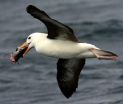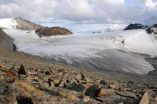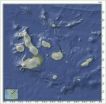(Press-News.org) New research in Biotropica asks FIFA to follow through with its environmental claims. The 2014 FIFA (Fédération Internationale de Football Association) World Cup will be played in Brazil. Its "Football for the Planet" program aims to monitor greenhouse gasses, provide environmentally friendly stadiums, and better waste management. However, FIFA has not maximized this opportunity. In an article published in the upcoming issue, researchers challenge the role that FIFA and the Brazilian government play in protecting the environment, asking both to: protect 1,000 hectares of the critically endangered Caatinga ecosystem – the natural habitat for its World Cup mascot, Fuelco - for each goal scored in the World Cup.
For the 2014 FWC in Brazil, FIFA has adopted the endemic Brazilian Three-banded armadillo, an endangered species, as its mascot. They named it FulecoTM by combining the Portuguese words for football ("futbol") and ecology ("ecologia"). The armadillo, when threatened, will protect itself by rolling up into a ball. The mascot plays an essential part in driving the environmental awareness of the World Cup.
Two species of Tolypeutes occur in Brazil, the endangered and endemic T. tricinctus and the lesser-known T. matacus. Although decreasing in population, there is no conservation plan for the species. The animal, and some 20 million people live in an area known as Caatinga, a tropical dry forest that once covered 845,000 square km in northeastern brazil that has been reduced in area by 53 percent. Despite being known as a biodiversity-rich region, the Caatinga is the least protected of the Brazilian ecosystems.
"Protecting the remaining Caatinga is extremely urgent. We want the choice of one of the Caatinga's most iconic species as the World Cup mascot to be more than just a symbolic one", says José Alves Siqueira, one of the paper's authors and a Professor at the Federal University of the Valley of São Francisco.
However, after the frenzy that centered around the Fuelco mascot fizzled, the environmental claims have not been fulfilled. The authors suggest steps that the federation and government can take to reaffirm their positions on providing an ecologically-friendly World Cup, such as promoting the 'Parques da Copa' project, protecting areas of the Caatinga, and instituting a conservation plan for the Tolypeutes tricinctus species.
"The Caatinga is a uniquely Brazilian ecosystem. By acting boldly and swiftly, FIFA and the Brazilian government could help save the Brazilian Three-banded armadillo and protect thousands of hectares of its habitat", says Enrico Bernard, another author also based at the Federal University of Pernambuco. "That would be the best goal scored this Cup."
INFORMATION: END
Scientists challenge FIFA: Save the 3-banded armadillo
2014-05-06
ELSE PRESS RELEASES FROM THIS DATE:
Mobile health apps lack behavior-change techniques
2014-05-06
Behavior-change techniques are not well represented in the marketing materials for top-rated physical-activity apps, according to a team of Penn State researchers.
They also found that two types of physical-activity apps are available on the market -- those that focus on educating users on how to perform different exercises and those that focus on supporting users' motivation for physical activity.
"The app marketplace is largely unregulated and users make decisions based on developers' descriptions of apps," said David Conroy, professor of kinesiology. "Our results ...
$200 bird scaring line for trawlers can cut albatross deaths by over 90 percent
2014-05-06
The sight of seabirds following trawlers in order to feast from discarded fish is a common maritime sight, but each year many thousands of seabirds are killed by overhanging cables or in nets. New research in Animal Conservation assesses mortality figures from South Africa to show that a simple bird scaring line can reduce the mortality rate by over 90%.
The research compiled data from five years of observations to compare current and historic mortality rates. Previous research shows that in 2006 approximately 18,000 seabirds were killed each year by the South African ...
The first globally complete glacier inventory has been created
2014-05-06
Thanks to the efforts of an international group of scientists – one of them is Tobias Bolch from Technische Universität Dresden, Germany - who have mapped all of the world's glaciers, glaciologists can now study with unprecedented accuracy the impacts of a changing climate on glaciers worldwide, and determine their total extent and volume on a glacier-by-glacier basis. Overall, glaciers cover an area of about 730,000 km2 and have a volume of about 170,000 km3. The scientists found nearly 200,000 of them, but they say that this is the least important result of the mapping ...
How have changing sea-levels influenced evolution on the Galapagos Islands?
2014-05-06
VIDEO:
This movie is a simple 0 m to -210 m geographical loop sequence at 5 m increments. Important features are the substantial gaps between Galapagos' "core " islands even at -100...
Click here for more information.
The Galapagos Islands have an iconic status in the history of evolutionary study, now new research shows that the islands' own geological past may have influenced the evolution of the chain's native species.
Writing in the Journal of Biogeography, ...
Adults at higher risk of suicide attempt if parent abused alcohol, research finds
2014-05-06
WASHINGTON -- People who grew up with a parent who abused alcohol may be 85 percent more likely to attempt suicide than people whose parents did not abuse alcohol, according to research published by the American Psychological Association.
Furthermore, having divorced parents increased by 14 percent the risk that a person would try to take his or her own life when compared to people whose parents did not divorce, the study found. But putting those two factors together - parents who abuse alcohol and are divorced -- did not increase suicide attempts, according to the study, ...
University of Toronto researchers find seeing 'Jesus in Toast' phenomenon perfectly normal
2014-05-06
TORONTO, ON – People who claim to see "Jesus in toast" may no longer be mocked in the future thanks to a new study by researchers at the University of Toronto and partner institutions in China.
Researchers have found that the phenomenon of "face pareidolia"--where onlookers report seeing images of Jesus, Virgin Mary, or Elvis in objects such as toasts, shrouds, and clouds--is normal and based on physical causes.
"Most people think you have to be mentally abnormal to see these types of images, so individuals reporting this phenomenon are often ridiculed", says lead researcher ...
Chimpanzees show similar personality traits to humans, Georgia State researchers say
2014-05-06
ATLANTA--Chimpanzees have almost the same personality traits as humans, and they are structured almost identically, according to new work led by researchers at Georgia State University.
The research also shows some of those traits have a neurobiological basis, and that those traits vary according to the biological sex of the individual chimpanzee.
"Our work also demonstrates the promise of using chimpanzee models to investigate the neurobiology of personality processes," said Assistant Professor Robert Latzman of Psychology, who led the research team. "We know that ...
US welfare spending up, but help for the neediest down
2014-05-06
Although the nation is spending more on welfare than ever before, most of that money is going to better-off families rather than the very poorest, a researcher found.
Robert A. Moffitt, the Krieger-Eisenhower Professor of Economics at the Johns Hopkins University, found that the United States has become more generous over time in supporting low-income families, spending 74 percent more in inflation-adjusted dollars on welfare programs in 2007 than in 1975. But for the 2.5 million single parent families with the absolute lowest levels of earnings, aid dropped 35 percent ...
Scientists convert stem cells to eye tissue
2014-05-06
Orlando, Fla. — In two separate studies, scientists have developed methods to convert non-embryonic stem cells into eye cells that could be used to restore sight. The research is being presented at the 2014 Annual Meeting of the Association for Research in Vision and Ophthalmology (ARVO) this week in Orlando.
In the first method, researchers converted cells taken from the front of a patient's eye into stem cells, which were then programmed to become nerve cells found in the back of the eye. The second study involved introducing stem cells to a single growth factor, which ...
New gel-based eye fluid aids post-operative healing
2014-05-06
Orlando, Fla. — In an effort to avoid serious side effects suffered after surgery to repair retinal detachment, vision scientists have developed a new product to help stabilize the eye while it heals. The research is being presented at the 2014 Annual Meeting of the Association for Research in Vision and Ophthalmology (ARVO) this week in Orlando, Fla.
In a recent study, Healaflow® a gel based on one of the most common compounds found in the liquid that fills the eye, was tested in rabbit eyes. After surgery to repair retinal detachment in the rabbits, Healaflow® did ...


